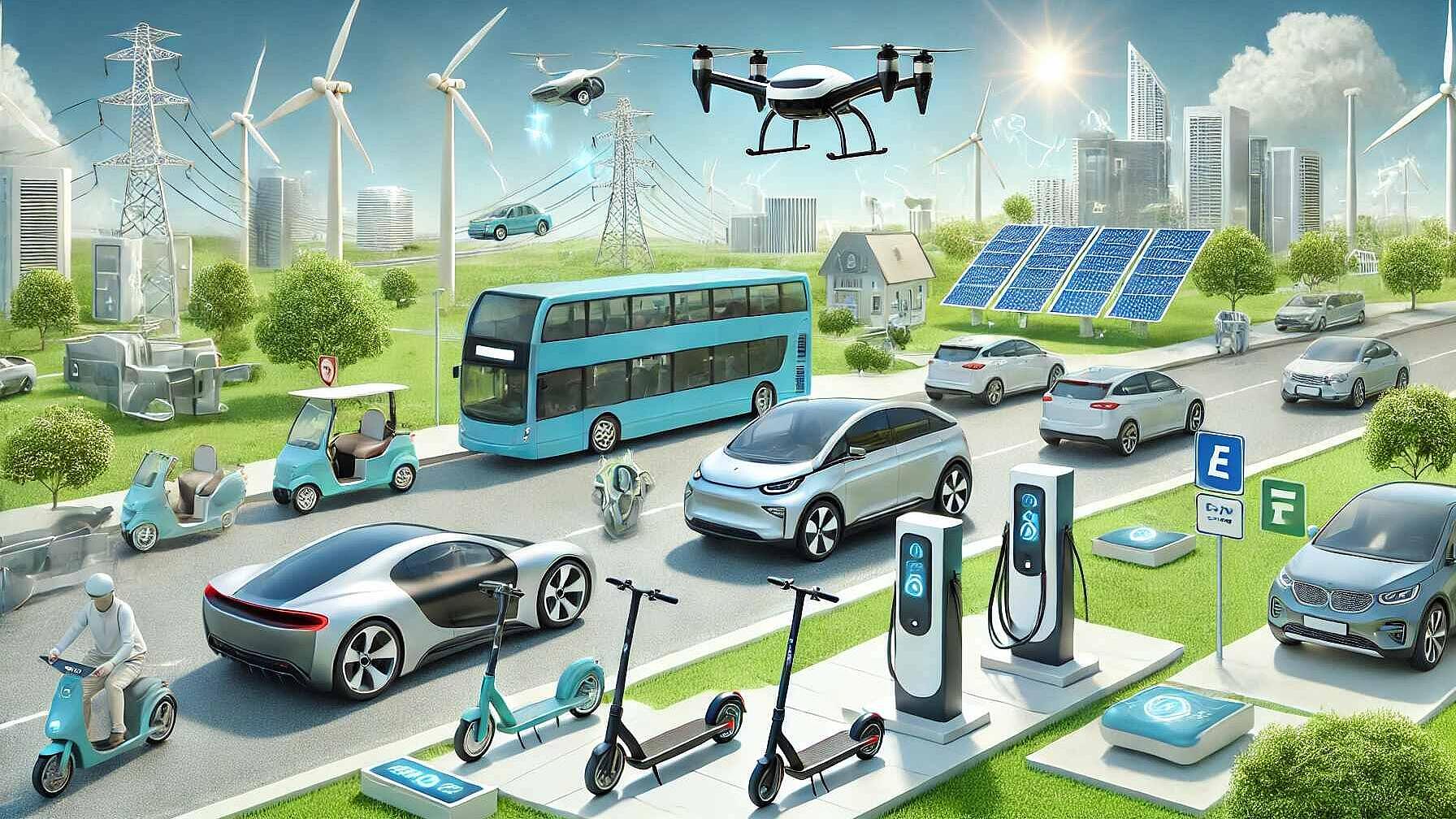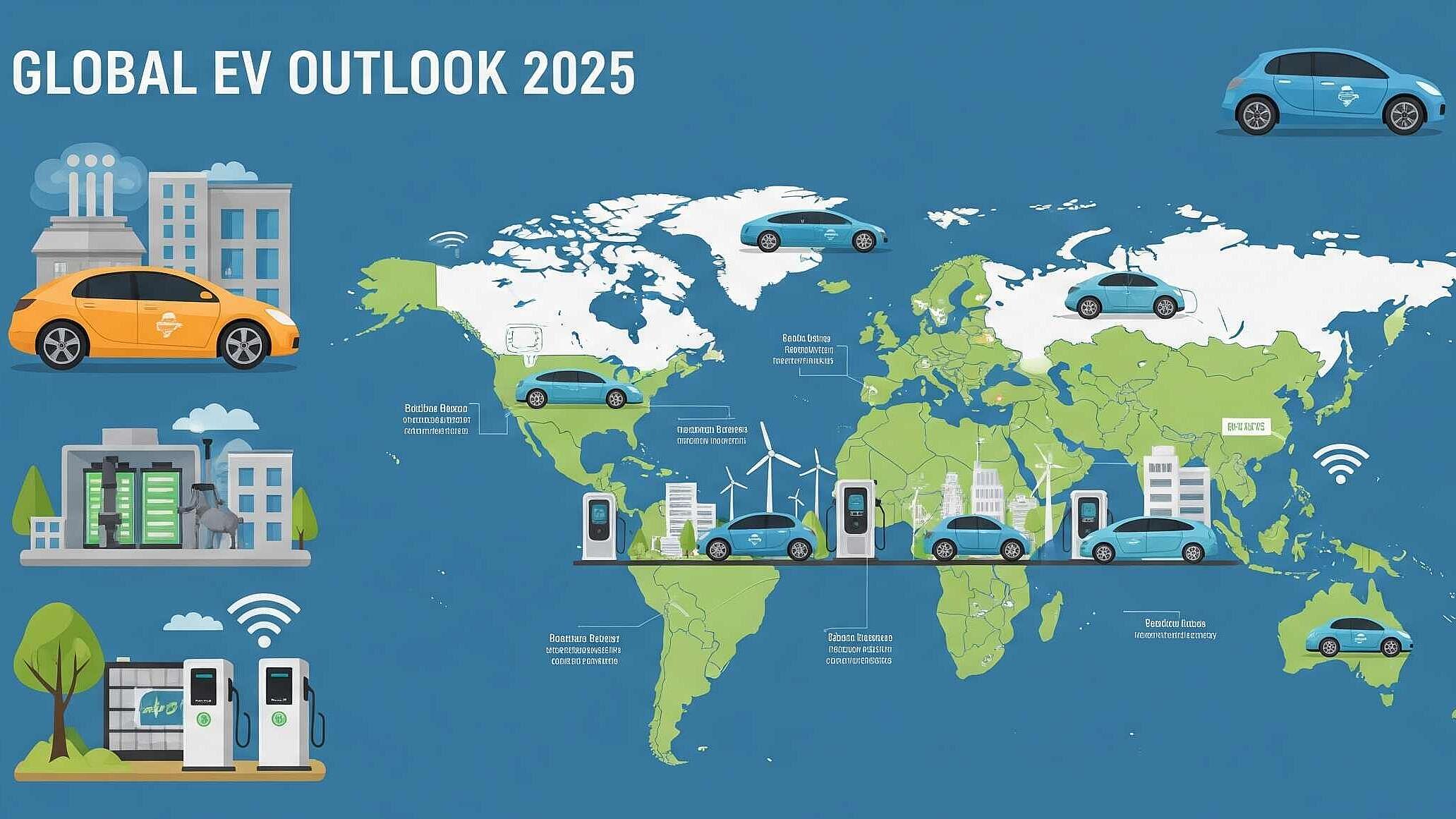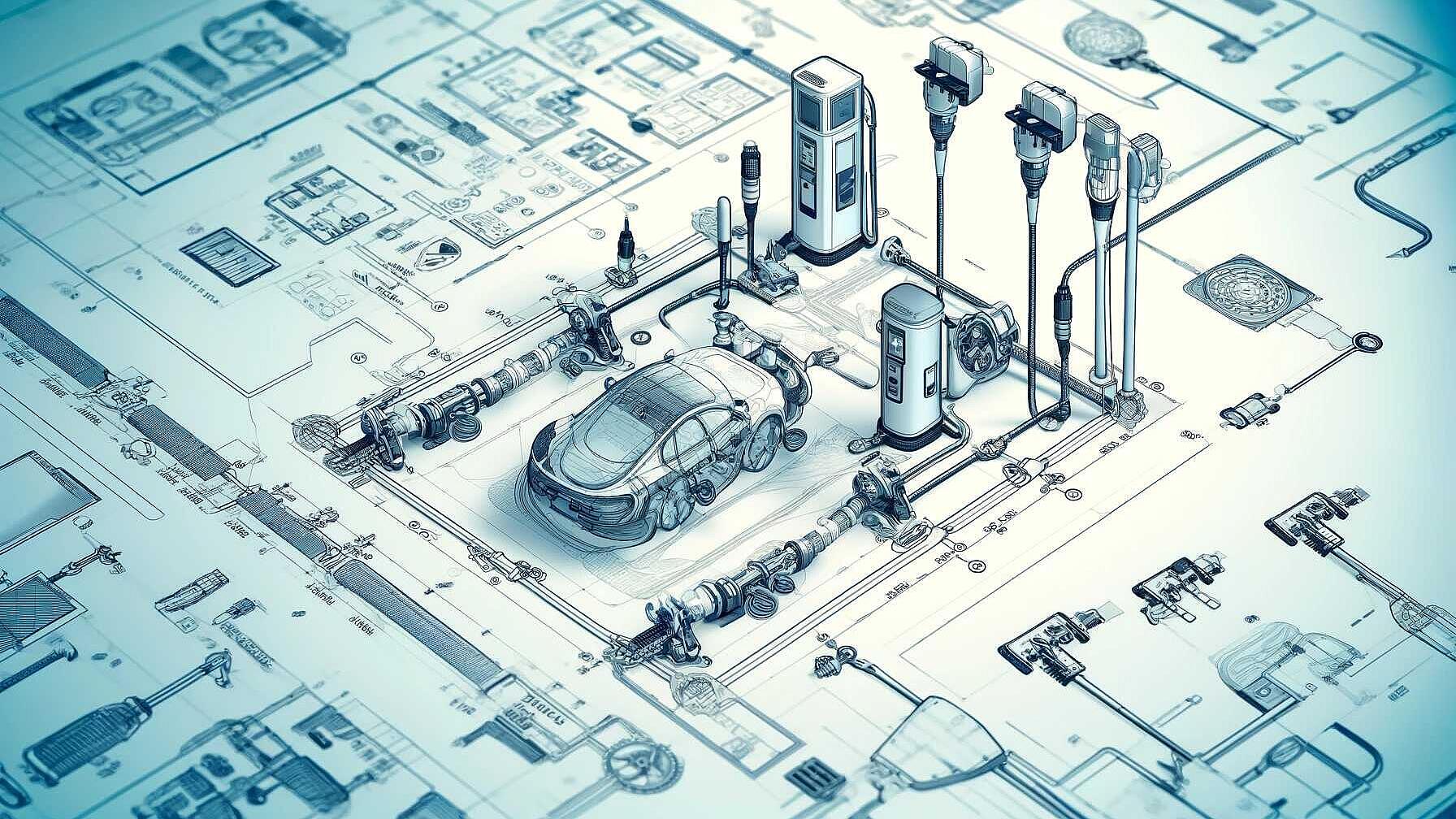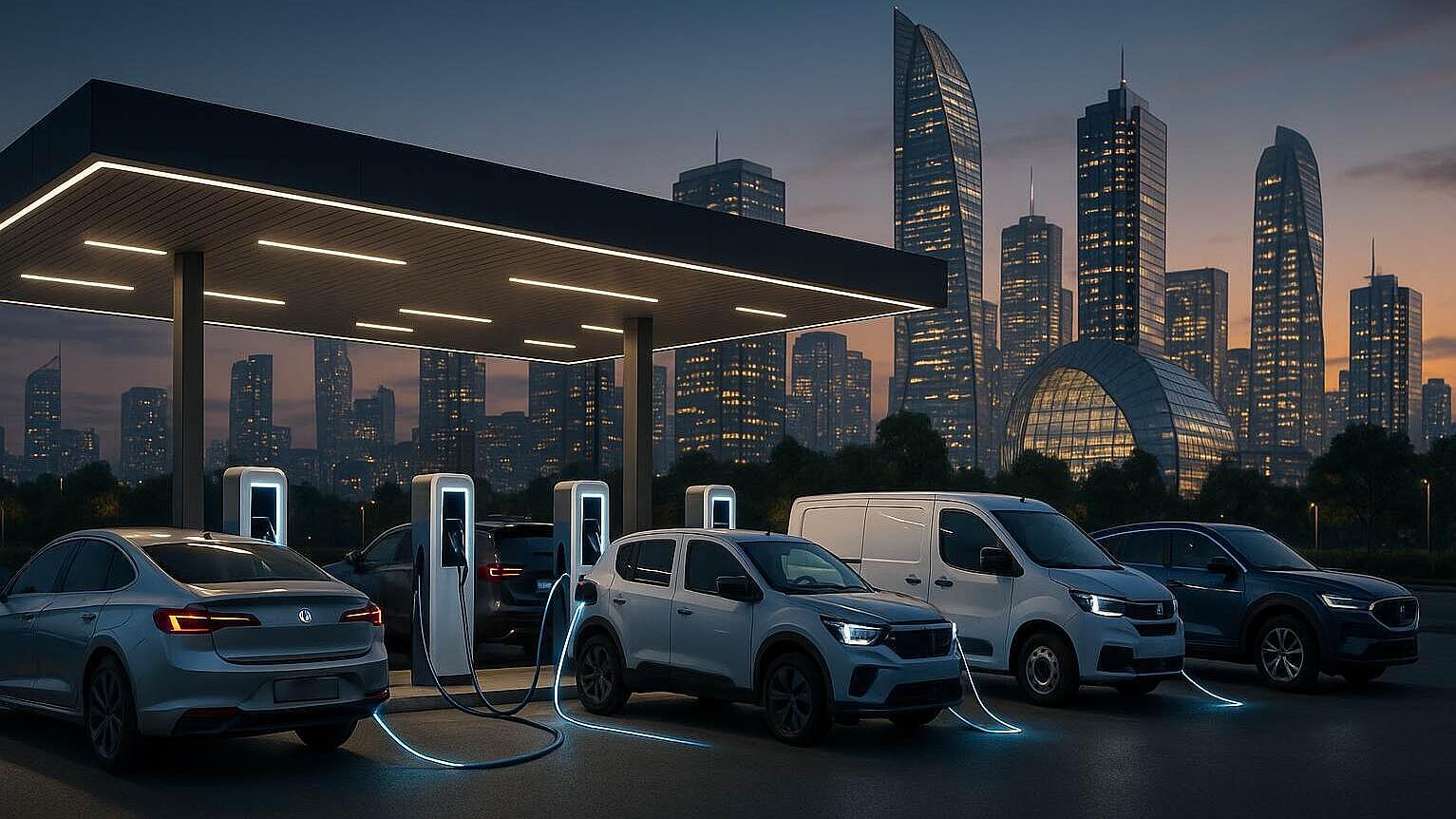 Buildings & Transport
Buildings & TransportOverview of main actors in the e-mobility ecosystem
Resumo
The paper discusses the crucial role of electric vehicles (EVs) in the EU’s transport sector decarbonisation, aligned with the 2040 climate targets set by the European Commission. EV adoption is expected to result in a 69-78% reduction in transport emissions compared to 2015, predominantly through the expansion of EVs in road transport complemented by e-fuels and advanced biofuels in maritime, aviation, and road transport.
The analysis foresees a significant increase in final electricity demand within the transport sector, projected to grow by a factor of 8 from 2021 to 2040, with road transport dominating electrification. There will be substantial rises in the shares of battery electric vehicles (BEVs) and the proportion of electricity in energy consumption for passenger cars.
Investment in the transport sector is expected to rise to approximately €870 billion annually but will maintain a steady share of GDP at around 4.2%. The e-mobililty ecosystem is diverse, comprising original equipment manufacturers (OEMs), charging point operators (CPOs), e-mobility and electric vehicle service providers (EMSPs and EVSPs), and power distribution operators, with each playing a significant role in facilitating EV adoption.
Utilities are central to the EV charging infrastructure, with responsibilities including load management and ensuring supply meets demand. Policies promoting EV uptake include mandates for real-time access to EV data, competitive charging markets, and pre-cabling for EV chargers in buildings, among other supportive legislative acts.
The transition is further characterized by digitalisation and data sharing across sectors, with the goal of optimizing the e-mobility ecosystem, reducing costs, and enhancing user experiences. Challenges include addressing data silos that limit efficiency and ensuring equitable and functional progression towards decarbonisation goals.
Leia artigo original eurelectric



